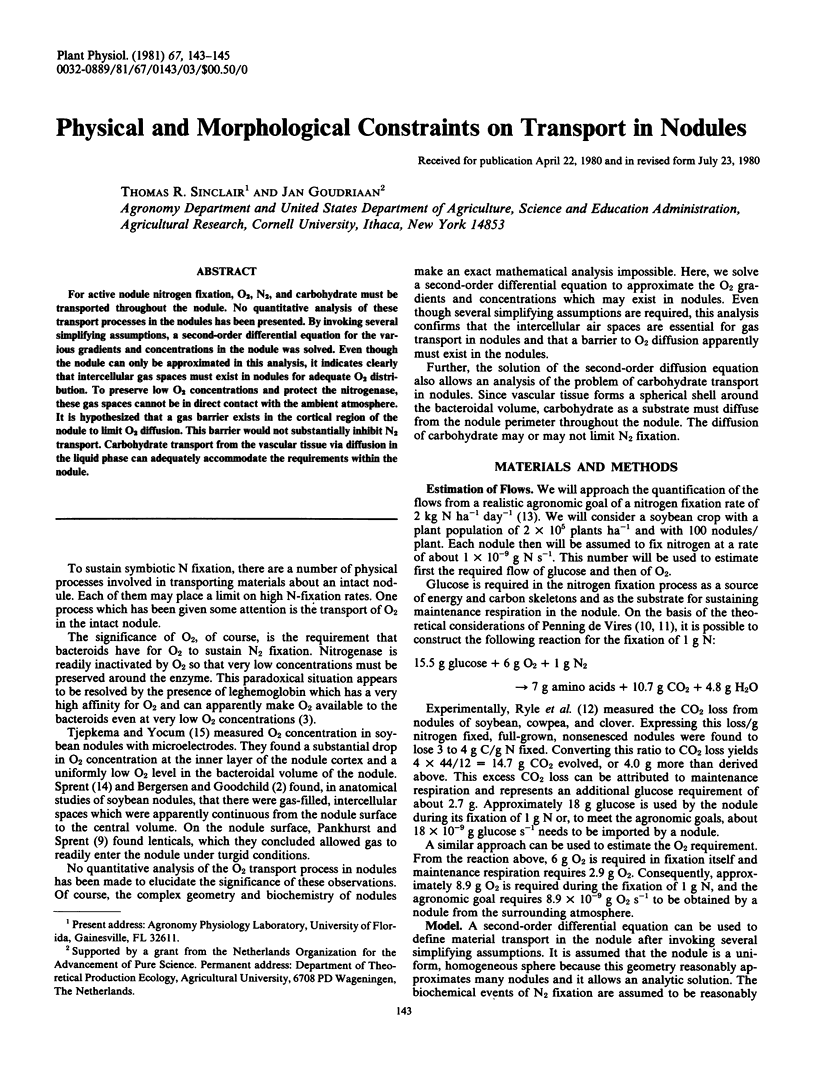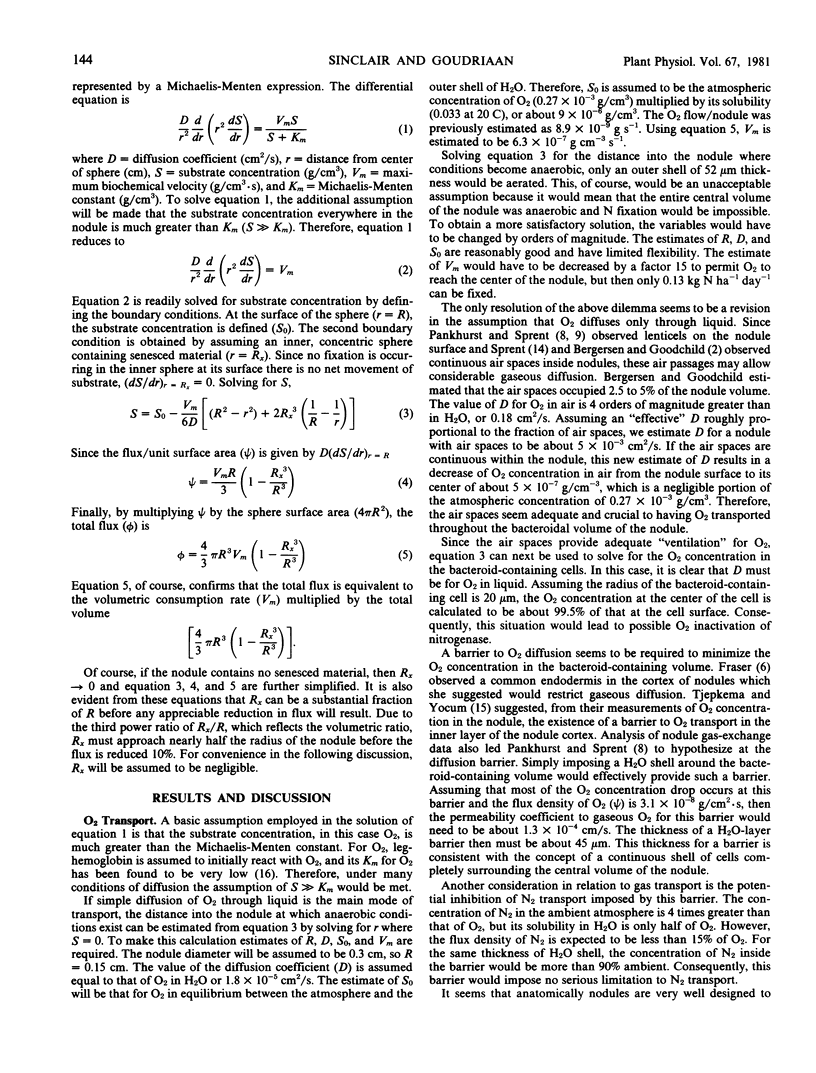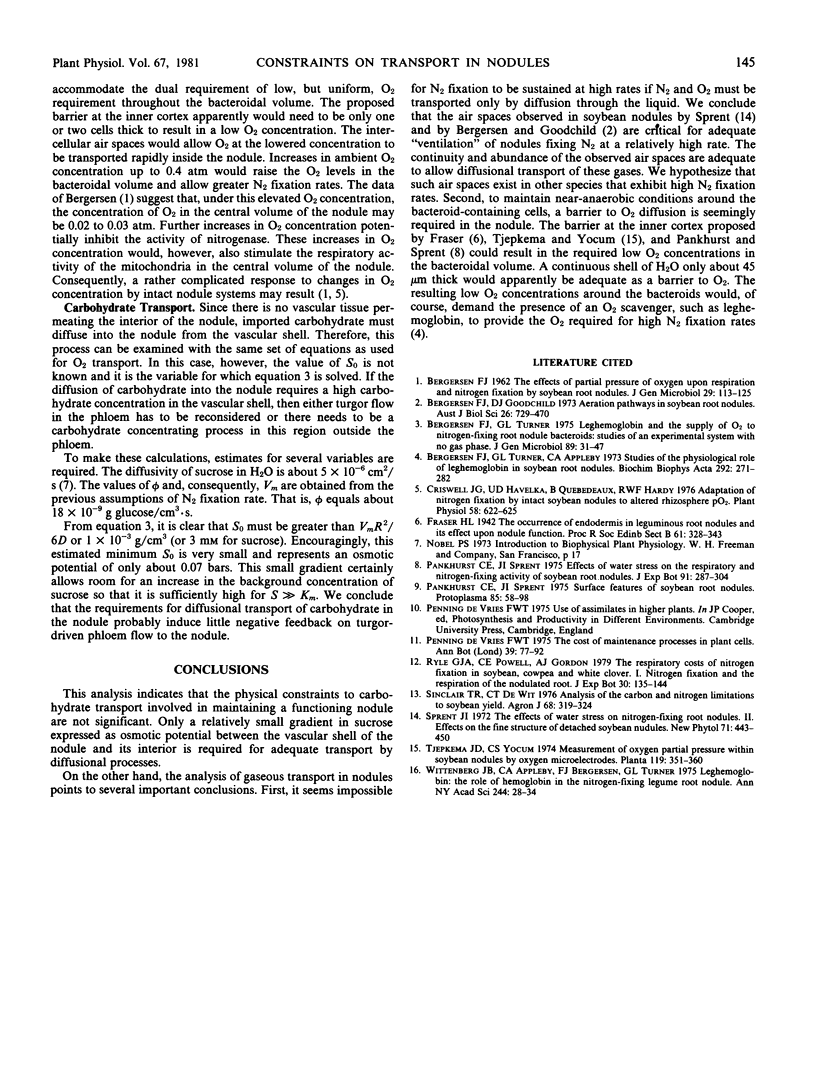Abstract
For active nodule nitrogen fixation, O2, N2, and carbohydrate must be transported throughout the nodule. No quantitative analysis of these transport processes in the nodules has been presented. By invoking several simplifying assumptions, a second-order differential equation for the various gradients and concentrations in the nodule was solved. Even though the nodule can only be approximated in this analysis, it indicates clearly that intercellular gas spaces must exist in nodules for adequate O2 distribution. To preserve low O2 concentrations and protect the nitrogenase, these gas spaces cannot be in direct contact with the ambient atmosphere. It is hypothesized that a gas barrier exists in the cortical region of the nodule to limit O2 diffusion. This barrier would not substantially inhibit N2 transport. Carbohydrate transport from the vascular tissue via diffusion in the liquid phase can adequately accommodate the requirements within the nodule.
Full text
PDF


Selected References
These references are in PubMed. This may not be the complete list of references from this article.
- Bergersen F. J., Turner G. L., Appleby C. A. Studies of the physiological role of leghaemoglobin in soybean root nodules. Biochim Biophys Acta. 1973 Jan 18;292(1):271–282. doi: 10.1016/0005-2728(73)90271-5. [DOI] [PubMed] [Google Scholar]
- Criswell J. G., Havelka U. D., Quebedeaux B., Hardy R. W. Adaptation of Nitrogen Fixation by Intact Soybean Nodules to Altered Rhizosphere pO(2). Plant Physiol. 1976 Nov;58(5):622–625. doi: 10.1104/pp.58.5.622. [DOI] [PMC free article] [PubMed] [Google Scholar]
- Wittenberg J. B., Appleby C. A., Bergersen F. J., Turner G. L. Leghemoglobin: the role of hemoglobin in the nitrogen-fixing legume root nodule. Ann N Y Acad Sci. 1975 Apr 15;244:28–34. doi: 10.1111/j.1749-6632.1975.tb41519.x. [DOI] [PubMed] [Google Scholar]


